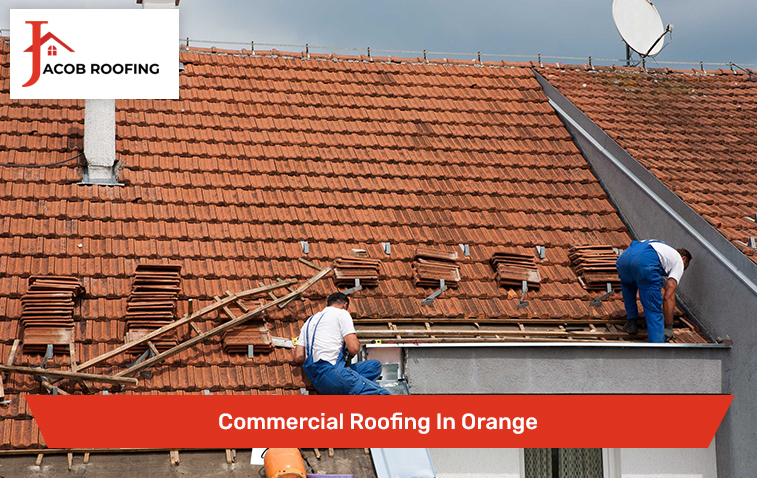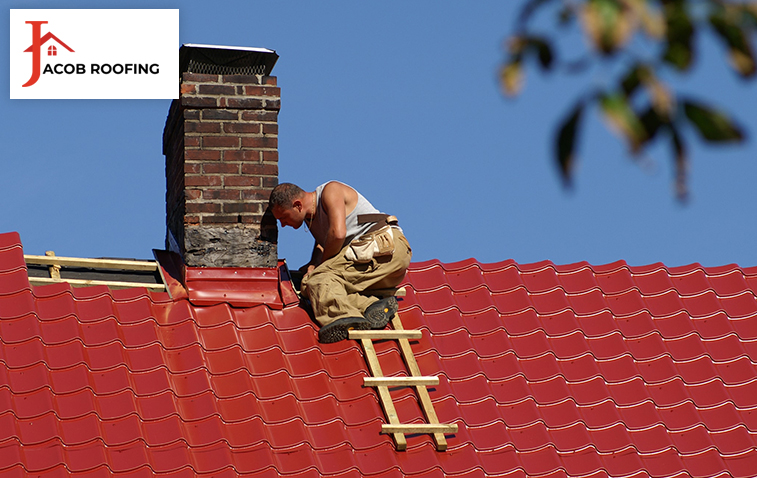The Different Structural Requirements of Roof
When you are thinking about working on commercial roofing in Orange. Commercial roofs have distinct structural requirements that differentiate them from residential roofs. Here are some key differences:

Size and Scale
Commercial roofs are typically larger in size and cover a greater area compared to residential roofs. They often need to accommodate HVAC systems, rooftop units, and other equipment necessary for commercial operations.
Load-Bearing Capacity
Commercial roofs are designed to handle heavier loads due to equipment, machinery, and foot traffic. They need to support the weight of HVAC units, solar panels, signage, and potential maintenance personnel.
Flat or Low-Slope Design
Many commercial roofs have a flat or low-slope design compared to the pitched roofs commonly found in residential buildings. This design allows for easier installation and maintenance of rooftop equipment and ensures efficient water drainage.
Fire Safety Regulations
Commercial buildings are subject to stricter fire safety regulations. Commercial roofs often require fire-resistant materials and insulation to meet the necessary safety standards.
Accessibility
Commercial roofs need to provide safe access for maintenance personnel and equipment. They may include features like walkways, roof hatches, and safety equipment to ensure safe access for inspections, repairs, and maintenance tasks.
Energy Efficiency
Commercial roofs often incorporate energy-efficient elements such as reflective coatings, insulation, or green roof technologies. These features help improve energy efficiency, reduce utility costs, and comply with environmental regulations.
Rules that Apply to Commercial Roofing in Orange
You should be also aware of the rules and regulations that apply specifically to commercial roofs In Orange, California. As a contractor in commercial roofing in Orange, Jacob Roofing is well versed in all the rules that apply to commercial roofing in Orange. These regulations are in place to ensure the safety, structural integrity, and compliance of commercial roofing systems. While specific requirements may vary, here are some common rules that apply
Building Codes
Commercial roofs must adhere to the building codes and regulations set forth by the City of Orange. These codes outline the minimum standards for construction, fire safety, wind resistance, and load-bearing capacity of commercial roofs.
Permitting and Inspections
Obtaining the necessary permits and undergoing inspections is a crucial requirement for commercial roof installations or modifications. Building permits ensure that the construction complies with local regulations, and inspections verify that the roof meets the required standards.
Fire Safety Regulations
Commercial roofs often have specific fire safety regulations, including the type of roofing materials used and the need for fire-resistant materials or coatings. These regulations aim to enhance fire protection and reduce the spread of flames in commercial buildings.
Accessibility Requirements
Commercial roofs may need to meet accessibility requirements for maintenance personnel and equipment. This can include providing safe access points, walkways, or other features to ensure safe working conditions during inspections, repairs, and maintenance tasks
Environmental Considerations
Commercial roofs may be subject to environmental regulations, such as energy efficiency standards or stormwater management requirements. This can include the installation of reflective roofing materials, insulation, or provisions for rainwater collection or drainage.
Choosing the Right Material
Get in touch for choosing the right roofing material for a commercial roof in Orange requires careful consideration of various factors. Here’s a step-by-step guide to help you make an informed decision:
Evaluate Climate and Weather Conditions
Consider the climate in Orange, including temperature ranges, rainfall, and exposure to sunlight. Choose a roofing material that can withstand local weather conditions and provide adequate protection against heat, UV radiation, and potential storms.
Assess Durability and Longevity
Commercial roofs should be durable and long-lasting to minimize maintenance and replacement costs. Research the expected lifespan of different roofing materials and choose one that offers excellent durability and stands up well to the local climate.

Here’s a table showcasing different commercial roofing materials and their average lifespan:
| Roofing Material | Average Age |
|---|---|
| Thermoplastic (TPO) | 20-30 years |
| Ethylene Propylene Diene Monomer (EPDM) | 20-30 years |
| Modified Bitumen | 20-30 years |
| Built-Up Roofing (BUR) | 15-25 years |
| Metal Roofing | 30-50+ years |
| PVC | 20-30 years |
| Concrete | 30-50+ years |
Consider Energy Efficiency
Energy-efficient roofing materials can help reduce heating and cooling costs. Look for materials with a high thermal resistance (R-value) and reflective properties to minimize heat absorption and lower energy consumption
Evaluate Maintenance Requirements
Consider the maintenance needs of different roofing materials. Some materials may require regular inspections, cleaning, or specific maintenance procedures. Choose a material that aligns with your maintenance capabilities and budget.
Assess Fire Resistance
Check the fire resistance rating of the roofing material. Commercial buildings often have specific fire safety regulations, so select a material that complies with these requirements and offers good fire resistance.
Consider Looks
The appearance of the roofing material can contribute to the overall aesthetics of your commercial building. Choose a material that complements the architectural style and desired aesthetic appeal of your property.
Evaluate Cost
Compare the upfront and long-term costs of different roofing materials. Consider not only the initial installation cost but also factors like lifespan, maintenance, energy efficiency, and potential insurance savings.
